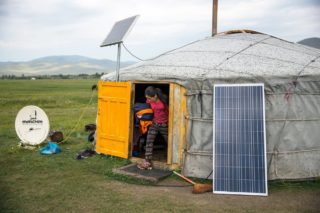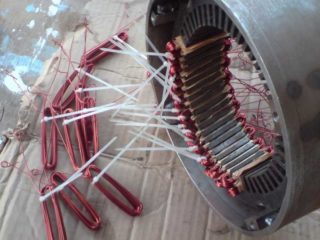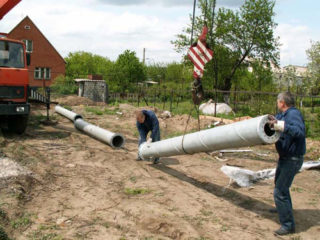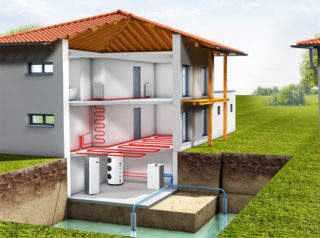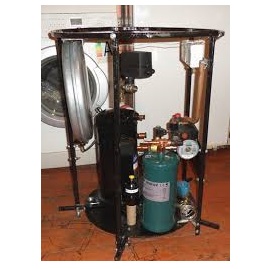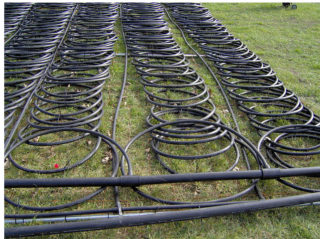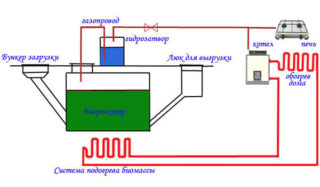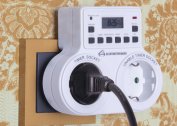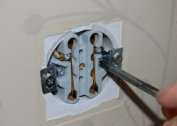Energy sources help provide the functions of all communication lines. With the temporary absence of main highways, alternative sources of electricity can be used. They are not as popular as traditional ones, but are more profitable in terms of operation and practically do not harm the environment.
Where and in what form to get energy resources
Traditional energy sources are thermal, nuclear and hydroelectric stations. Alternative energy supplies can be self-healing, efficient, cheap and environmentally friendly. In fact, there is energy in natural resources, you just need to try to extract it. Without special skills, you can perform the following tasks:
- install solar collectors and batteries to power lighting or warm water;
- mount wind generators;
- use heat pumps to heat the house due to the heat of water, land or air;
- apply biogas plants for processing animal, bird, human waste.
The disadvantage of non-traditional energy sources is large financial investments for their organization.
Renewable energy sources
Due to the limited fuel resources, scientists all over the world are developing and putting into operation the energy sources of the future. Renewables include:
- Electricity generators - in Russia the most commonly used are electric, gasoline and gas. The latter operates on liquefied and natural fuels, due to its low noise level it is used in everyday life and is durable.
- Solar energy - a person uses electromagnetic radiation. The source of electricity and autonomous heating is silent, environmentally friendly.
- Wind turbines - operate on the basis of the transformation of the kinetic energy of the wind into the mechanical rotation of a turbine generating alternating current. Horizontal and vertical windmills are highly efficient.
- Biofuels - the best options are oilseed fats, algae, organic waste gas.
- Waterwheel stations are a convenient source of energy if there is a river near the house. The turbine wheel is driven by water flows.
- Geothermal solutions - in seismically active territories, they convert heat that occurs when geothermal water is released.
Russia has several solar stations - in the Orenburg region (capacity 40 MW), in the Republic of Bashkortostan (capacity 15 MW), in the Crimea (10 units of 20 MW each).
The application of solar energy
Alternative electricity based on electromagnetic solar radiation is justified for people who have a cottage in the country. The reason is the indicator of total power in good weather no more than 5-7 kW per hour. To date, several solar installations are popular.
Solar panels
The assembly of devices is made from photovoltaic converters. Industrial elements are constructed from miners that generate current when exposed to direct light. In the private sector, silicon converters of poly- and single-crystal type are popular. The latter differ in efficiency of 13-25%, but polycrystalline are cheaper. The temperature range of the plates is from -40 to +50 degrees.
Solar collectors
Used to heat air or water. The user can set the direction of heated flows, organize a reserve in case of bad weather. Manufacturers produce three modifications of the collectors - air, flat and tubular.
- Flat plastic. They are a black and transparent panel in one case with a central copper coil. When exposed to sunlight, the lower dark element heats up. It transfers heat to a copper coil that heats the water. The flat collector is suitable for heating water in a pool or outdoor shower. Minus of technology - for heating large volumes, many elements are required.
- Tubular. They look like vacuum or coaxial tubes made of glass. The water heated by the sun flows down them. The heat concentrated inside a special system heats the water in the storage tank. Sediment is used to circulate water flows. A tubular manifold is a good solution for heating water in hot water and heating.
- Aerial solar collectors. The devices resemble flat plastic models due to the black bottom and transparent top panel. Dimensional installations are located on the eastern or southeastern wall. In them, due to solar heat, heats the air supplied to the house and utility rooms with special fans.
Solar energy is best for warm floors.
Self-made solar panels
Solar installations are an alternative to traditional electricity, which when finished is expensive. With your own assembly, you can reduce the cost of construction by 3-4 times. Before you start creating a solar panel, you need to understand the principle of its functionality.
How the solar power system works
To present the principle of operation, it is worth starting with the design. The device of solar energy sources includes:
- solar panel - a complex of units for converting sunlight into an electronic stream;
- Battery - there are several in the system, the number depends on the capacity of consumers;
- charge controller - provides normal battery charging without recharging;
- inverter - transforms low-voltage current from batteries to high-voltage current (3-5 kW is enough for a house).
Solar panels individually produce low-voltage currents (about 18-21 V), which is enough to charge a 12-volt battery.
Creating a solar panel
Battery assembly is made from modular photocells. In one household module there are 30, 36 and 72 elements. They are connected in series with a power source, the maximum voltage of which is 50 V.
For the body part you will need wooden bars, fiberboard, plexiglass and plywood. The bottom of the box is cut out of plywood and inserted into a frame of 25 mm thick bars. Holes are made around the perimeter of the frame. To prevent overheating of the elements, the drilling step should be 15-20 cm.
For the bottom size, count the number of photocells and measure each.
From a fiberboard with a clerical knife, a substrate is made of fiberboard with ventilation holes. They are made according to a square-nested pattern with an indent of 5 cm. Then:
- Elements are stacked on top of the substrate and soldered.
- Connections are made sequentially, in order.
- Finished rows are connected to current-conducting buses.
- Elements are turned over and fixed in the seat with silicone.
- Check the output voltage parameters. Its range is from 18 to 20 V.
- 2-3 days run the battery to test the charging ability.
- At the end of the test, the joints are sealed.
Paint and dry the substrate 2 times.
After checking the operation, the solar panel is assembled:
- Bring the input and output contacts out.
- Cut out the cover from plexiglass and fix it with screws on pre-made holes.
- When using a diode circuit of 36 diodes with a voltage of 12 V, acetone is removed from the part.
- Holes are made in the plastic panel, diodes are inserted and soldered.
At the last stage, the installation and orientation of the solar panel is carried out to facilitate access to services and energy efficiency.
Rules for installing a solar panel
Industrial modifications can rotate independently. Household devices must be set in several ways:
- Removing from shaded areas - a tree or a tall house nearby will make the device inefficient.
- Landmark on the sunny side. Residents of the northern hemisphere orient the structure to the south, the southern - to the north.
- The angle of inclination - is tied to the geographical latitude of the site. In summer, it is better to tilt the solar panel 30 degrees to the horizon, in winter - 70 degrees.
- Availability of access for maintenance - cleaning dust, dirt, adhering snow.
The device will be effective if the direct rays of the sun on the cover.
Features of wind generators
Sources of wind electricity work on the principle of converting kinetic energy into mechanical energy, and then into alternating current. Electricity can be obtained at a minimum wind flow speed of 2 m / s. Optimal wind speed is from 5 to 8 m / s.
Types of wind generators
According to the type of rotor mounting, there are modifications:
- Horizontal - differ in the minimum amount of materials for manufacturing and high efficiency. The disadvantages of the device are the high mounting mast and the complexity of the mechanical part.
- Vertical - work in a wide range of wind speeds. The specificity of the generator is the need for additional fixation of the motor.
By the number of blades, there are single- or multi-blade models. By material, the blades are classified into sailing and rigid. The screw pitch of the installation can be variable (you can set the operating speed) and fixed.
During the construction of a wind installation, the foundation is necessarily created and strengthened.
Wind generator design
The finished wind generator consists of the following parts:
- tower - is placed in a windy zone;
- blade generator;
- blade controller - converts alternating current into direct current;
- inverter - transforms direct current into alternating current;
- storage battery;
- water tank.
Accumulative battery smooths out the difference in the season of winds and the calm period.
Making a low-speed wind generator from a machine generator
Since a kit for assembling a wind generator costs from 250 to 300 thousand rubles, it is advisable to make the design yourself. You will need a car generator and a battery.
The blades provide the operation of other devices of the windmill. You can make them yourself from fabric, metal or plastic pipe as follows:
- Choose a material with good wind resistance - from 4 cm thick.
- Calculate the length of the blade so that the diameter of the pipe is 1/5.
- Trim the pipe and apply it as a template.
- Walk along the edges of all elements with an emery cloth to remove bumps.
- Fix the plastic blades to the aluminum disc.
- Balance the wheel by locking it horizontally.
- Grind the edges of the wind wheel while rotating.
The optimal design of the blades is a large number, but smaller.
The mast manufacturing project needs to start with the selection of material. You will need a steel pipe with a length of 7 m and a diameter of 150-200 m. If there are obstacles, the wheel rises 1 m above them.
For additional structural stability, pegs for stretching are made of steel or galvanized cable 6-8 mm in thickness.The mast and pegs must be concreted.
The process of altering the oscillator is to rewind the starter assembly and create a rotor based on neodymium magnets. In the device, holes are drilled under them. Magnets must be placed alternating between the poles and fill the voids with epoxy.
The rotor is wrapped in paper to rewind the coil in one direction according to a three-phase scheme. At the last stage, the generator is tested - at 300 rpm it should show 30 V.
The more turns on the coil, the more efficient the generator.
Alternative wind sources of heat and electrical energy are collected after the manufacture of the pivot axis. You will need a pipe with two bearings and a tail made of galvanized sheet 1.2 mm thick.
The generator is attached to the mast through the frame of their pipe. The distance from the beam to the blades should be more than 25 cm. After assembling the basic structure, the charge controller, inverter and battery are mounted.
Heating a house with heat pumps
Europe has been using heat pumps for several years, interacting with all alternative types of electricity. In the summer and winter, the units take heat from the soil, air, water and direct it to heat the room.
Varieties of heat pumps
Depending on the heating needs, you can choose models with 1, 2, 3 circuits, 1-2 capacitors. They will work for heating and cooling or exclusively for heating.
According to the type of energy source and the method of electricity production, devices are:
- Air-water. Heat flows from the air and heat the water. The systems are suitable for climatic zones with a winter temperature of -15 degrees.
- Earth-water. Actual for a temperate climatic zone. Mounted in the ground by means of a collector or probe without permits for drilling.
- Water-water. Installed near ponds. In winter, the pump provides heat to the large house by heating the source.
- Water-air. The source of energy is a reservoir. Heat flows through a compressor into the air. It becomes a coolant.
- Earth-air. The soil is a source of heat that is transferred to the air by the compressor. Energy carrier - antifreeze liquids.
- Air to air. Devices work on the principle of air conditioning - for cooling and heating.
The choice of heat source depends on the geology of the area and the presence of obstacles for earthworks.
How the heat pump works
The heat pump operates on the basis of the Carnot cycle - temperature increase during sharp compression of the coolant. Since the devices have 3 working circuits (2 - external, 1 - internal), a condenser, an evaporator and a compressor, the scheme of their action can be represented as follows:
- The primary coolant (located in water, in the air, in the ground) takes away heat and sources with low potentials. The maximum node temperature is about + 6 degrees.
- A low temperature carrier with a low temperature is located in the inner loop. When heated, the refrigerant evaporates; its vapor in the compressor is compressed. At this point, heat is released. Vapor temperature - from +35 to +65 degrees.
- Heat in the condenser enters the coolant from the heating circuit. Vapors become condensate and are sent to the evaporator.
The cycle of the heat pump is constantly repeated.
Handmade heat pump
Homemade is quite real if you have working parts from household appliances.
To prepare the condenser and compressor you will need:
- Make the compressor of the pump from the compressor of the refrigerator or air conditioner. The detail is fixed with a soft suspension on the wall of the boiler room.
- Make a capacitor. The best option is a stainless steel tank of 100 liters.
- Cut the container in half with a grinder, and then insert the coil (copper tube of the refrigerator or air conditioner).
- After installing the coil, weld the tank halves.
For a high-quality seam, use argon welding.
The evaporator is made on the basis of a 75-80 liter plastic tank with a из inch copper pipe coil in diameter. It is wrapped around a steel pipe 300-400 mm in diameter. The turns are fixed with perforated.
A thread is cut on the coil for coupling with the pipeline. Refrigerant is pumped into the unit, after which the evaporator is mounted on the wall.
The optimal source for these alternative methods of generating heat and electricity will be water from a well or a well. The liquid does not freeze even in winter.
It will take 2 wells:
- for water intake and its supply to the evaporator;
- to discharge the waste water and its flow to the evaporator.
Autonomy of the heat pump will be provided by automatic mechanisms for controlling the movement of the coolant along the heating circuits and freon pressure.
Heat generation from other alternative sources
When organizing the first external circuit of the pump, you need an effective heat source:
- Ring-shaped pipes in the water. A pond without a large freezing depth or a river provides the effectiveness of the technology. Pipes are laid under water with the help of cargo.
- Thermal fields. Pipes are buried below the freezing of the soil - a large layer of soil is removed.
- Geothermal springs. Wells are drilled to great depths. They start up circuits with coolants.
- Outboard air. Heat is extracted from ventilation shafts or wind channels.
The minus of the heat pump is the high cost and costs of installing heat sources.
Biogas plants
Organic alternative electricity is produced using biogas systems. The devices allow the processing of waste poultry and animals. The resulting gas is purified and dried, and then used as a coolant. Residual masses will be an effective and safe fertilizer for the soil.
Technology principle
Gases are formed during the fermentation of biological waste from animals and birds. An anaerobic environment without oxygen is optimal. It increases the activity of mesophilic and thermophilic bacteria. For the efficiency of the process, the mass will need to be mixed by hand using a stick or mechanical stirrers. Under ideal conditions, from 1 to 4.5 liters of gas is obtained in 1 liter of a closed container heated to a temperature of +50 degrees.
Biogas system for a private house
The simplest bioreactor is a container with a lid and a mixing mechanism. A hole is made in the cover for the gas exhaust hose. Its quantity will be enough for 1-2 burners.
Underground or elevated bunker increases usable volume. The underground structure is made of reinforced concrete with an upper layer of thermal insulation. Capacity is divided into compartments. Manure is loaded into the conveyor, filling the hopper by 80-85%. The remaining area is used for gas accumulation. It is discharged through a special tube, the second end of which is in the hydraulic lock. After draining, the purified gas enters the house.
Alternative types of extraction of heat resources and electricity are currently unavailable to residents of apartments. They can be used by residents of private houses and farms. The only drawback of renewable sources is the cost of arranging the system, but financial investments pay off after 1-2 years of operation.
